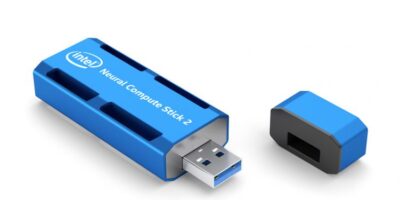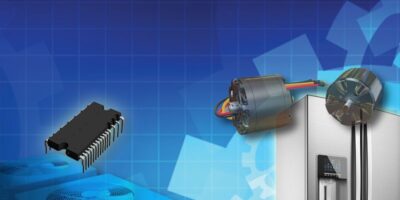Automated guided vehicles (AGVs) can be operated safely using the RSL 400 safety laser scanner, using protective and warning fields. It also simultaneously captures the measurement values for the navigation software.
When the triangulation principle is used for navigation, AGVs are typically equipped with two different sensors, one for safety and one for navigation. The RSL 400 safety laser scanner from Leuze Electronic, however, not only handles the safety aspects, but also provides all measurement values for the AGV’s navigation based on the natural navigation principle. In addition, the measurement values have an extremely high angular resolution and accuracy, reports Leuze. This is important to precisely determine the position of the AGV. Consequently, only one scanner is needed for safety and navigation functions.
Measurement value output of the RSL 400 is optimised for navigation software that functions according to the principle of natural navigation with simultaneous localisation and mapping (SLAM). With each revolution of its deflection unit, which last 40 milliseconds each, the safety laser scanner emits 2,700 light pulses which are scattered in all directions on obstacles. Parts of the scattered light are transmitted back to the scanner and used to calculate the distance to the obstacle. Similar to a map, the navigation software contains an image of the respective room, including all fixed boundaries. The current position of the AGV is then calculated by comparing the measurement values to the map. This concept is referred to as natural navigation.
The more detailed and exact the measurement values of a scanner are, the more precisely the AGV can navigate. With an angular resolution of 0.1 degrees, the RSL 400 can capture the environment in high detail over the entire measurement range up to 50m. This is achieved through a narrow laser spot that maintains its perpendicular shape over the entire scanning angle. It also reduces incorrect measurements, which can occur on edges.
In addition to the angular resolution, distance values are also important. Typical error accuracy is less than 30mm. The values are not affected by the reflectance of the object, whether it is a reflector or a black wall. The additional output of the received signal strength value for each beam allows autonomous detection of reflectors by the navigation software. When beams strike a reflector, the values differ greatly from any other environment. This makes simple and reliable detection possible.
Safety features include the ability to offer up to 100 switchable protective and warning field pairs. This high number means that the protective fields can be adapted to the respective movement and load conditions as well as the speed of the vehicles. In four-field mode with 50 switchable field sets, the device can monitor up to four protective fields simultaneously. This enables safe and reliable reduction of the speed of AGVs. With a scanning angle of 270 degrees, the RSL 400 can also cover the front and side areas of AGVs at the same time, for example, around corners.
Maximum operating range is 8.25m, meaning that even large AGVs can be safeguarded with only two RSL 400.
The product range includes nine variants, three of which with data output for AGV navigation. All models are available for the four operating ranges of 3.0, 4.5, 6.25, and 8.25m. Models with PROFIsafe/ProfiNet interfaces are also available. These interfaces make it easier to integrate the devices, particularly when many different protective field configurations are used.
http://www.leuze.com







